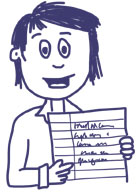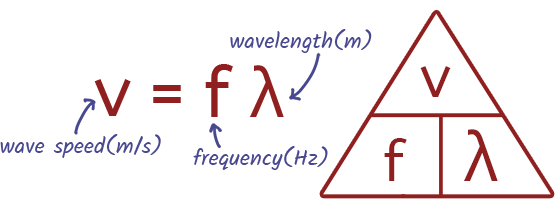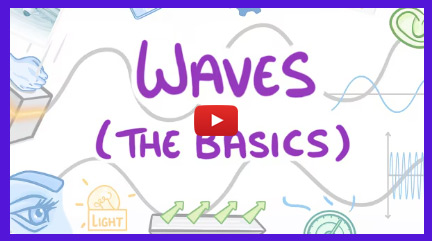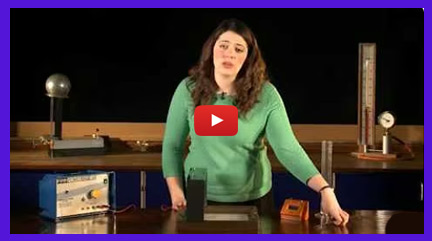
Waves
Waves are disturbances that transfer energy without transferring matter. They can be found in various forms, such as sound waves traveling through air and water waves on the surface of the ocean. Understanding waves helps explain sound, light, and seismic activity, essential for understanding the world around us.
Equations on this page:
Wave speed
Practicals on this page:
Waves in a ripple tank
Energy transfer in waves
Waves transfer energy in the direction they are travelling. Waves have an amplitude, wavelength and frequency. An easy way to remember what each does think of a roller coaster.
- Amplitude is the height of the roller coaster.
- Wavelength is the distance between two consecutive hills on the roller coaster.
- Frequency is how many times the roller coaster completes a full loop in one minute.
Hertz (Hz) is the measurement of frequency.
What are transverse and longitudinal waves?
Transverse waves have particle motion perpendicular to the direction of wave propagation (like shaking a rope), while longitudinal waves have particle motion parallel to the direction of wave propagation (like pushing and pulling a slinky). These refer to the type of oscillations or vibrations of the wave.
What are electromagnetic waves?
Electromagnetic waves are a type of wave that can travel through empty space (a vacuum) as well as through various materials, such as air, water, and solids.
Examples of electromagnetic waves include visible light, radio waves, microwaves, infrared radiation, ultraviolet radiation, X-rays, and gamma rays. Each type of electromagnetic wave has different properties, such as wavelength and frequency, which determine its behaviour and how it interacts with matter.
What is refraction?
Refraction is the bending of a wave as it passes from one medium into another medium with a different density.
When a wave travels from one medium into another medium at an angle, its speed changes, causing it to bend. The amount of bending depends on the change in speed and the angle at which the wave enters the new medium. If the wave enters a denser medium (where the wave speed is slower), it bends towards the normal (an imaginary line perpendicular to the surface). If it enters a less dense medium (where the wave speed is faster), it bends away from the normal.
Refraction occurs with all types of waves, including light waves, sound waves, and water waves. Examples of refraction include the bending of light when it passes from air into water (which causes objects underwater to appear shifted) and the bending of sound waves in the Earth's atmosphere (which can create sound mirages).
Key Words
Waves can be:
- Absorbed - this transfers energy to the material's energy stores.
- Transmitted - waves travel through the new material.
- Refraction -waves cross a boundary between materials, and the angle is changed.
Specular reflection - wave is reflected in a single direction.
Diffuse reflection - wave is reflected by a rough surface and scattered in different directions.
Sound waves - caused by vibrating objects.
Parts of the ear:
- Ear drum - vibrates as sound waves reach.
- Ossicles - receive the vibrations from the ear drum.
- Cochlea - turns vibrations to electrical signals which then get sent to your brain.
Ultrasound - sound with frequencies higher than 20,000Hz.
Echo sounding - used by boats and submarines, use high-frequency sound waves including ultrasound.
Seismic waves - produced by earthquakes which send out through the Earth.
Seismometers - detect seismic waves over the surface of the planet.
Seismologists - study seismic waves to work out the time it takes for the shock waves to reach each seismometer.
P-waves - longitudinal waves that travel through solids and liquids and speeds faster than S-waves.
S-waves - transverse waves that can't travel through liquids or gases.
Also see Electromagnetic Waves, Light,
Revision Notes

The Cornell method is like a supercharged note-taking system that helps you ace your revision!
Print out our blank revision notes pages to help you revise.
How to make effective revision notes with the Cornell method.
Exam Questions & Answers

Download and print off practice our FREE worksheet with exam style questions on Cell Biology.
EQUATION Wave speed
Wave speed refers to the speed at which a wave travels through a medium. It represents how quickly the wave's energy is transferred from one point to another.

PRACTICAL Waves in a ripple tank
In this practical, you use a ripple tank to study the properties of water waves. A light shines through the water so you can clearly see the wave patterns on a screen below.
You’ll measure things like wavelength, frequency, and wave speed by creating regular ripples, timing them, and measuring distances between wave crests. This helps you test the wave equation:
Wave speed = Frequency × Wavelength
Links for Learning
BBC Bitesize: Properties of waves
BBC Bitesize: Transverse and longitudinal waves
BBC Bitesize: Reflection and refraction
BBC Bitesize: Sound and ultrasound
BBC Bitesize: Properties of waves test
BBC Bitesize: Transverse and longitudinal waves test
BBC Bitesize: Reflection and refraction test
BBC Bitesize: Sound and ultrasound test
Revision Notes

The Cornell method is like a supercharged note-taking system that helps you ace your revision!
Print out our blank revision notes pages to help you revise.
How to make effective revision notes with the Cornell method.
Why Do I Need to Know About Waves?
In Everyday Life
- Listening to music or chatting—you experience sound waves, letting you hear your favourite songs or friends talking.
- Seeing and using screens—you rely on light waves, which let you see objects and powers technologies like TVs and cameras
- Watching the weather, surfing, or boating—you observe water waves, which help illustrate energy moving without moving the water itself
- Making phone calls or using Wi-Fi—these rely on radio and microwave waves, enabling wireless communication over distances
In Science & Physics Careers
- Become a radio frequency (RF) engineer, designing systems for cell networks, radio, and Wi-Fi.
- Work as a radiographer or sonographer, using X-ray or ultrasound waves to diagnose and treat patients
- Use sonar in marine tech or radar for weather prediction and aviation control.
- Contribute to medical imaging, like MRI, or environmental tech like ground-penetrating radar and Doppler systems




